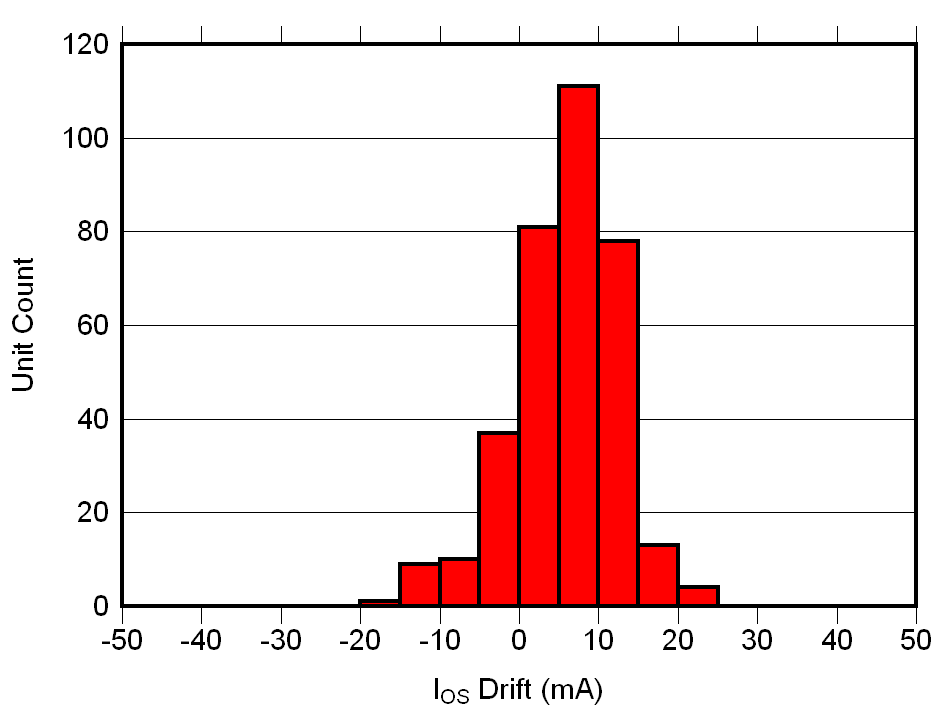ZHCSK83B September 2019 – July 2021 TMCS1100
PRODUCTION DATA
- 1 特性
- 2 应用
- 3 说明
- 4 Revision History
- 5 Device Comparison
- 6 Pin Configuration and Functions
- 7 Specifications
- 8 Parameter Measurement Information
- 9 Detailed Description
- 10Application and Implementation
- 11Power Supply Recommendations
- 12Layout
- 13Device and Documentation Support
- 14Mechanical, Packaging, and Orderable Information
9.3.3.2 Lifetime and Environmental Stability
The same compensation techniques used in the TMCS1100 to reduce temperature drift also greatly reduce lifetime drift due to aging, stress, and environmental conditions. Typical magnetic sensors suffer from up to 2% to 3% of sensitivity drift due to aging at high operating temperatures. The TMCS1100 has greatly improved lifetime drift, as defined in the Section 7.9 for total sensitivity error measured after the worst case stress test during a three lot AEC-Q100 qualification. All other stress tests prescribed by an AEC-Q100 qualification caused lower than the specified sensitivity error, and were within the bounds specified within the Section 7.9 table. Figure 9-4 shows the total sensitivity error after the worst-case stress test, a Highly Accelerated Stress Test (HAST) at 130°C and 85% relative humidity (RH), while Figure 9-5 and Figure 9-6 show the sensitivity and offset error drift after a 1000 hour, 125°C high temperature operating life stress test as specified by AEC-Q100. This test mimics typical device lifetime operation, and shows the likely device performance variation due to aging is vastly improved compared to typical magnetic sensors.
 Figure 9-4 Sensitivity Error After 130°C, 85% RH
HAST
Figure 9-4 Sensitivity Error After 130°C, 85% RH
HAST Figure 9-6 Input-Referred Offset Drift After AEC-Q100
High Temperature Operating Life Stress Test
Figure 9-6 Input-Referred Offset Drift After AEC-Q100
High Temperature Operating Life Stress Test Figure 9-5 Sensitivity Error Drift After AEC-Q100 High
Temperature Operating Life Stress Test
Figure 9-5 Sensitivity Error Drift After AEC-Q100 High
Temperature Operating Life Stress Test